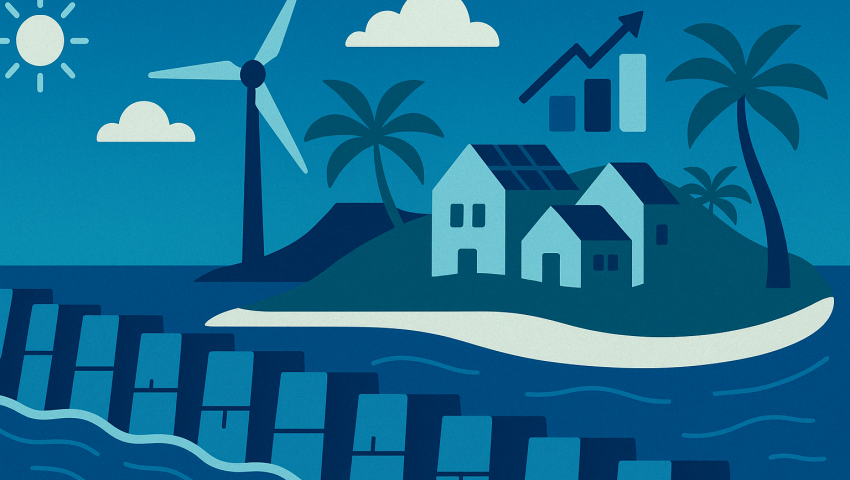
Island Resilience: Designing Institutional Projects for Climate-Vulnerable Nations
How the Maldives Is Becoming a Global Model for Climate-Adaptive Infrastructure, Public Investment, and Community-Centered Governance
Climate change is no longer a distant threat—it’s a lived reality for many nations. But for low-lying island nations like the Maldives, the urgency is existential. Sea-level rise, coastal erosion, freshwater scarcity, and biodiversity loss aren’t just challenges—they are catalysts that demand resilient, adaptive, and future-proof institutional planning.
This article explores how the Maldives—despite its size and vulnerability—is emerging as a global model for climate-resilient infrastructure and governance, offering lessons for other small states, coastal regions, and global institutions navigating the age of climate uncertainty.
Understanding Island Resilience: The Maldives as a Living Laboratory
With 80% of its landmass less than 1 meter above sea level, the Maldives is on the frontlines of climate impact. Yet rather than retreating, it’s building forward—through smart infrastructure, localized governance, public-private collaboration, and innovative reinvestment strategies.
The story of the Maldives is not just one of vulnerability. It’s a story of vision, resilience, and leadership—and a blueprint for designing institutional projects in climate-vulnerable nations.
“The most resilient nations are not those with the most land—but those with the most foresight. Resilience is a mindset before it is a policy.” — Yusuf A. Shunan, Founder, Maldicore
From Reactive to Strategic: Planning for the Climate Era
Resilience is no longer about bouncing back. It’s about building systems that can adapt, absorb, and evolve in the face of climate, economic, and social shocks.
For the Maldives, this means:
- Protecting coastlines with engineering and natural systems
- Transitioning to renewable energy sources
- Managing marine zones with precision data
- Reinvesting tourism revenue into local infrastructure
- Empowering communities with decentralized governance
Each institutional project—whether a seawall, solar grid, or zoning plan—is now designed with climate foresight and local participation at its core.
Case Studies: Institutional Projects Shaping Island Resilience
1. Seawall Engineering in Malé
Malé, the capital island, is protected by a six-kilometer-long concrete seawall built with support from Japan. It has already proven its worth—preventing major flood damage during the 2004 Indian Ocean tsunami.
Impact:
- Saved thousands of lives and assets
- Set a precedent for coastal defense in other islands
- Informed new hybrid models combining engineered + ecosystem-based solutions
2. Renewable Energy Islands
The Maldives has committed to becoming net-zero by 2030, and pilot projects across the atolls are turning that goal into action.
Examples:
- Kaafu and Addu Atoll: Hybrid solar-diesel microgrids
- Battery storage innovations to handle island-specific load balancing
- Solar-powered desalination units on remote islands
Impact:
- Reduced diesel imports
- Increased energy independence
- Better climate credentials for tourism and development grants
3. Smart Marine Zoning
Through tools like geospatial mapping, the Maldives is implementing smart zoning of marine protected areas (MPAs) and fishing corridors to balance economic use and environmental health.
Features:
- Coral regeneration zones
- Sustainable tuna catch monitoring
- Real-time vessel tracking systems
Impact:
- Protects biodiversity
- Enables sustainable blue economy development
- Engages communities through data-informed policy decisions
4. Tourism Tax Reinvestment Models
Tourism accounts for over 21% of GDP and more than 70% of foreign exchange earnings. The government has smartly introduced Green Taxes and bed levies on resorts, part of which is reinvested into island development, waste management, and infrastructure upgrades.
Impact:
- Equity between resort-rich and underserved islands
- Community-led waste-to-energy projects
- Improved roads, harbors, and health posts in non-tourist islands
🔹 Key Pillars of Climate-Resilient Institutional Projects
- Integrated Planning: Cross-sectoral coordination between environment, infrastructure, energy, and tourism
- Community Engagement: Local island councils are empowered to co-manage resources
- Sustainable Finance: Blended models using donor funds, taxes, and private capital
- Technology & Data: GIS mapping, AI forecasting, remote sensors for smarter decisions
Strategic Lessons for Climate-Vulnerable Nations
Whether you're a coastal region in Southeast Asia, a Caribbean island, or an African river delta, the Maldivian model offers transferable insights:
✅ Don’t Build Hard—Build Smart
Combine grey infrastructure (seawalls, roads) with green systems (mangrove buffers, coral reefs) for multi-layered resilience.
✅ Monetize Tourism Responsibly
Use tourism as a financial engine to fund climate resilience—while maintaining ecological integrity.
✅ Localize Governance
Devolve decision-making to island councils, cooperatives, and citizen-led committees for context-aware implementation.
✅ Use Data to Lead
Geo-tagged marine zones, flood-risk maps, and predictive weather modeling can shift projects from reactive to preventive.
Designing the Future in Rising Seas
The Maldives reminds us that being climate-vulnerable does not mean being powerless. With visionary leadership, intelligent planning, and community-centered design, island nations can not only survive climate change—they can shape how the world responds to it.
Institutional projects are no longer just about roads and walls. They are about systems that learn, infrastructure that adapts, and communities that lead.
From seawalls that protect lives to zoning that protects livelihoods, the Maldives is writing the manual for what resilient development truly looks like.
For governments, donors, and agencies planning the future of vulnerable regions, the message is clear:
The solution is not to fight nature—but to work with it, intelligently, locally, and strategically.


